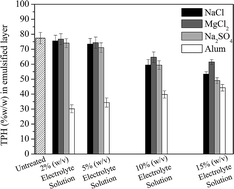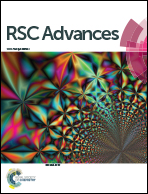Emulsified oily-waste water: pretreatment with inorganic salts and treatment using two indigenous membrane modules
Abstract
The present study proposes the application of high sheared membrane modules in separating oil and water from their emulsified form. Moreover, the assessment was carried out with oil-in-water (o/w) emulsion after being treated with different electrolytes and the results from the treated feed to the membrane were compared with the untreated feed to the membrane. Two high sheared modules, namely, a turbine flow membrane module (TFMM) and a radial flow membrane module (RFMM), were compared to understand the superlative performance in removing oil from its o/w emulsion (either treated or untreated) using a 25 kDa polysulfone (PSf) membrane at different temperatures and pressures. It was observed that the permeate flux is 30–38% higher in all the cases with TFMM, depending on operating temperature and pressure. Furthermore, among the electrolytes used, 15% sodium sulfate (Na2SO4) solution shows a maximum of 26% oil removal from emulsion, while TFMM shows a 45% higher permeate flux compared to RFMM with this pretreated feed compared to the module.



 Please wait while we load your content...
Please wait while we load your content...